Olive Fragrance Enveloping the Minjiang River: A Thousand-Year Tradition of Sweet Preserves
The Minjiang River winds its way through the lush hills and fertile plains of Minhou, where generations of artisans have skillfully turned green fruits into amber-hued preserved olives—what we know as Minhou olive preserves.
This olive preserve was once presented as a tribute to the emperor during the Tang Dynasty, a prized treasure aboard merchant ships in the Ming and Qing dynasties. Today, it continues to be a treasured tradition handed down by the Zheng family artisans of Fuzhou.
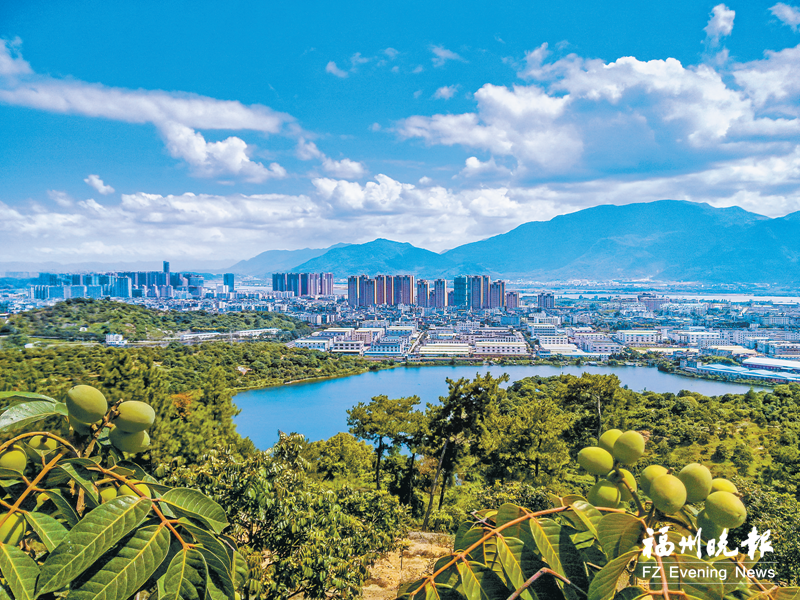
Minhou, the historic “First County of Fujian”, is hailed as the “Home of Olives in China.” (Photo by Hong Mingdeng)
The Past and Present of a Millennium-Old Tribute
Minhou olives grow in the lush hills along the Minjiang River, basking in a mild 19.5°C sunlight and drawing nourishment from 1,673.9 millimeters of rainfall. They ripen gradually in the warmth of 240 frost-free days. The connection between Minhou and olives dates back well before the Tang Dynasty.
As recorded in the General Gazetteer of Fujian (Ba Min Tong Zhi), olives were considered a prized local specialty in Fuzhou during the Tang Dynasty, reserved for tribute to the emperor and unavailable to the general public. During the late Tang and Five Dynasties, the “Green Fruit Ships”—dedicated to the olive trade—would transport Fuzhou’s sweet olives to Suzhou, Hangzhou, and the imperial capital during harvest season.
In the Song Dynasty, Zhang Shinan, in his Records of Official Travels (You Huan Ji Wen), hailed Fuzhou’s “Clove” olive as the finest in the country, thus certifying the superior quality of Minhou olives.
During the Ming and Qing dynasties, olive groves spanned more than a hundred li (50 kilometers), from Shuikou in Minqing to the outskirts of Fuzhou, establishing olives as both a “royal tribute” and a “traded commodity in the north.”
In the early years of the Republic of China, Minhou sandalwood olives were transported to Shanghai by sea. The Minhou County Gazetteer (Min Hou Xian Zhi) from that era notes: “Olives are sourced from Ganzhezhou in Fuzhou, stretching over eighty li (40 kilometers) along the foothills, where they grow among the trees.”
According to the statistics of 1957, Minhou County had an olive planting area of 1,922 mu, with a production of 3,750 tons, accounting for 47% of the province’s total olive output at that time. In the fall of 1996, Minhou was honored as the “Home of Olives in China” by the Department of Rural Development, Development Research Center of the State Council, and the Specialty Economics Committee of the China Association of Agricultural Science Societies, in recognition of its rich olive production.
Currently, Minhou County has an olive planting area of approximately 50,000 mu, with an annual production of about 30,000 tons and an annual output value of around 400 million yuan. According to incomplete statistics, Minhou accounts for over one-fifth of the country’s total olive production, with one in every four olives across China coming from the region. The Minhou olive industry has evolved into a multi-dimensional model that combines cultivation, processing, and cultural tourism, further strengthened by cultural and creative brands like the “Olive Culture Festival” and “Intangible Cultural Heritage Experience Tours.”
Production process of olive preserves:
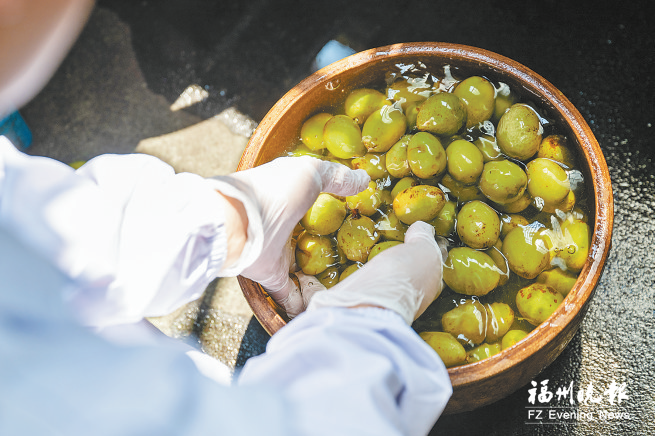
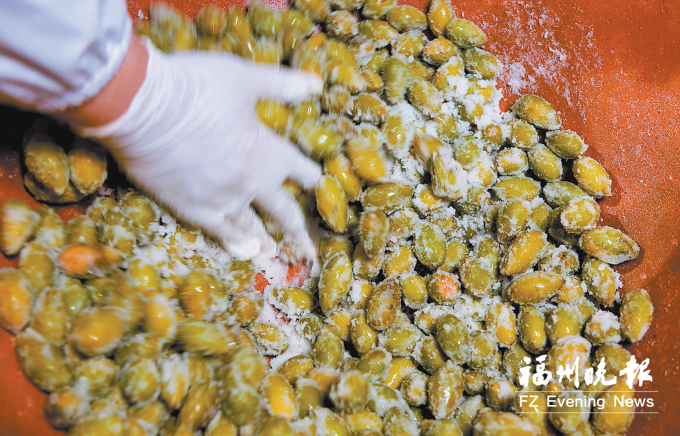
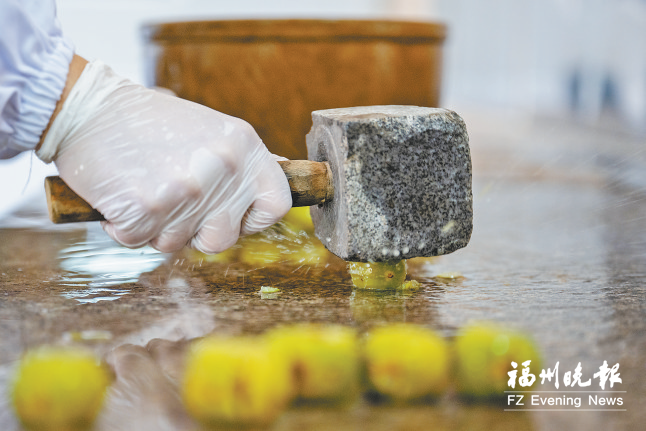

①Cleaning ②Rubbing with salt ③Flattening ④Sugar processing
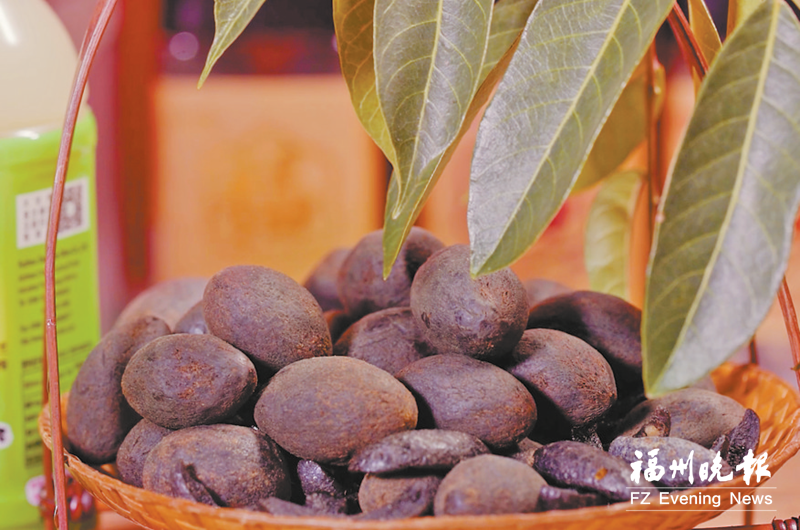
⑤Finished olive preserves
Cultural Significance Behind Intangible Cultural Heritage Skills
The olive’s bittersweet flavor echoes the Chinese saying, “Good medicine tastes bitter,” reflecting a deeper philosophical meaning.
Southern Song Prime Minister Li Gang, in his poem Tasting New Olives, connected the taste of olives with patriotic values, highlighting that “A good medicine may be hard to take, just as honest advice can be uncomfortable to hear, but both ultimately lead to positive results.” The Compendium of Flowers from the Ming Dynasty gave the olive the refined titles “Admonishing Fruit” and “Loyal Fruit,” symbolizing the noble ideals sought by scholars and officials through this humble fruit. In the villages by the Minjiang River, the folk song A Single Olive employs straightforward metaphors to capture the joys and sorrows of love and marriage, making the olive an emotional symbol of everyday life.
What truly transforms the bitter taste of the green olive into a delightful treat is the honey-preserving technique passed down through generations of artisans. In the Tang Dynasty, to address the short shelf life of fresh olives, people began soaking them in honey to preserve them, extend their freshness, and enhance their flavor. These honey-preserved olives can be seen as the original form of preserved fruit.
Since 1921, the technique of making Minhou olive preserves has been handed down through the Zheng family, with Zheng Chanyu, Chairman of Fuzhou Dashiwei Natural Food Co., Ltd., leading the way. Over the past century, they have preserved the authentic taste and distinct characteristics of these preserves, ensuring that the cultural heritage they represent remains alive and relevant across generations. Last year, this technique was officially recognized as part of Fuzhou’s Municipal Intangible Cultural Heritage.
The process for this technique is as follows: cleaning, peeling, flattening, sugar curing, and sun drying.
Step 1: Rinse the fresh, plump olives in clean water and set them aside for later use. Step 2: Sprinkle a proper amount of coarse salt over the olives and gently rub them with your hands. The coarse salt helps to remove the olive’s waxy skin, allowing the sugar to better penetrate the fruit during the next steps.
Flattening and sugar processing are the most distinctive and challenging steps in the entire process, as they ultimately shape the final flavor of the preserves. Flattening requires splitting the olive in half without completely separating the halves, and the pit must not fall out. This is done using a stone hammer, where the right amount of force is essential—too much or too little won’t yield the desired result. After flattening, the olives are blanched in hot water for 10 minutes to remove their astringent taste, then drained and placed in a ceramic jar. The prepared sugar syrup and spices are poured in, and the olives are sugar-soaked six times throughout the process. Over 25 days of marination, the bitterness of the olives gradually melds with the growing sweetness, resulting in a distinctive flavor.
Finally, the marinated olives are taken out of the jar and sun-dried. This marks the completion of the Minhou olive preserves, which are delicately shaped, crisp, tender, and perfectly balanced in sweetness and sourness.
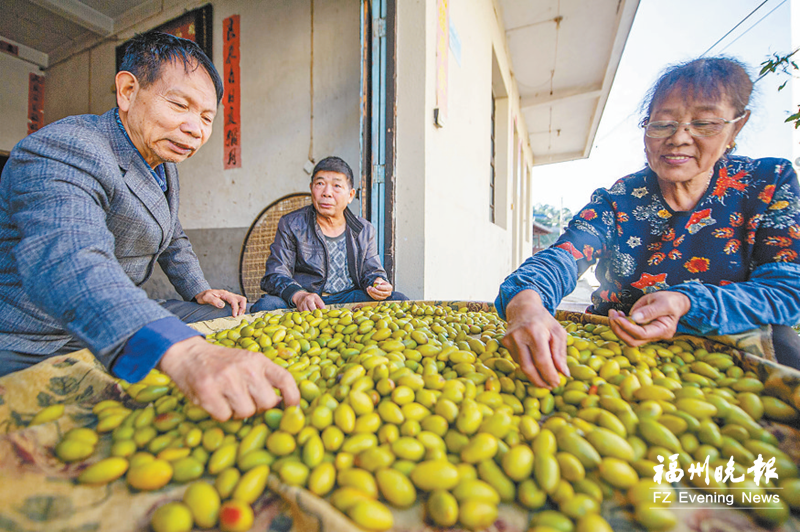
Villagers in Futian Village, Minhou, were selecting olives.
Revival of a Millennium-Old Craft of Olive Preserves
The fusion of intangible cultural heritage and modern technology has brought innovation to the production of Minhou olive preserves
The Zheng family has developed their single-unit quick-freezing technology, replacing the traditional salt-curing process. This innovation eliminates the risk of brine contamination and helps retain the olives’ maximum nutritional value. Additionally, solar heat pump drying technology has replaced sun-drying, freeing production from weather constraints and making it more hygienic, energy-efficient, eco-friendly, and safe.
While preserving the traditional essence, the Zheng family has infused Minhou olive preserves with modern flavors. From savory to spicy to five-spice, a wide range of tastes has been introduced to satisfy the varied preferences of people from different regions.

Leisure space under the olive trees in Damucheng Village, Minhou. (Photo by Shi Meixiang)
Beyond preserved olives, a range of new olive-based products has been created, such as olive wine infused with kudzuvine root and raisin tree seeds for improved hangover relief, and sugar-free olive juice, offering a perfect match for today’s health-focused lifestyle…
Since 2008, the Zheng family has been exporting their olive products, steeped in a thousand years of tradition, to the Americas and Australia, bringing the sweet taste of the Minjiang River to the world. To introduce more people to Fujian’s culture and the allure of Minhou, the packaging of the olive preserves features iconic landmarks, including the historic Shangxiahang in Fuzhou, the majestic twin towers of Quanzhou, and the distinctive Tulou (a large, enclosed and fortified earth building) in Yongding, Longyan.
Opening a box of Minhou olive preserves offers more than just a bittersweet flavor; it’s a journey into the enduring cultural legacy along the Minjiang River. (Fuzhou Evening News Reporters: Chen Muyi/Text; Lin Shuangwei/Photo)